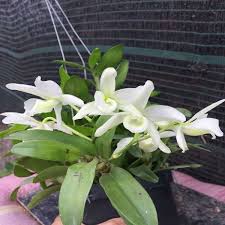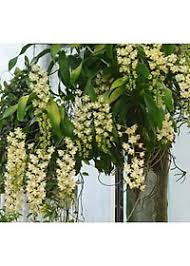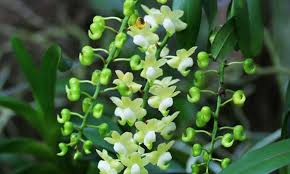
The White Egg Orchid, scientifically known as *Dendrobium crumenatum*, is a captivating flower that enchants enthusiasts with its delicate beauty and captivating fragrance. This orchid is native to tropical regions, thriving in humid environments where it can showcase its stunning white blossoms. Understanding where these orchids are cultivated can deepen our appreciation for their beauty and the cultural significance they hold. This article will explore some of the most renowned cultivation regions for White Egg Orchids worldwide, their unique climates, cultivation practices, and the impact of these regions on the orchid trade.
## Table of Contents
1. **Introduction to White Egg Orchids**
– 1.1 Botanical Characteristics
– 1.2 Cultural Significance
2. **Key Cultivation Regions for White Egg Orchids**
– 2.1 Southeast Asia
– 2.2 Central and South America
– 2.3 The Pacific Islands
– 2.4 Southern United States
3. **Cultivation Practices in Different Regions**
– 3.1 Growing Conditions
– 3.2 Harvesting Techniques
– 3.3 Local Traditions
4. **Impact of Climate on Orchid Cultivation**
– 4.1 Temperature and Humidity
– 4.2 Seasonal Variations
5. **Challenges Facing Orchid Cultivators**
– 5.1 Environmental Threats
– 5.2 Market Fluctuations
– 5.3 Conservation Efforts
6. **Future of White Egg Orchid Cultivation**
– 6.1 Trends in Orchid Growing
– 6.2 Sustainable Practices
7. **Conclusion**
—
## 1. Introduction to White Egg Orchids
### 1.1 Botanical Characteristics
The White Egg Orchid is characterized by its beautiful white flowers, which resemble eggs in shape and are often fragrant. The plant features long, slender stems and leaves that can range from green to a light yellow-green hue. Typically, the flowers bloom in clusters, creating a stunning visual display. These orchids thrive in tropical climates, making them popular among growers and collectors alike.
### 1.2 Cultural Significance
In various cultures, the White Egg Orchid holds symbolic meanings related to purity, renewal, and beauty. They are often used in traditional ceremonies, weddings, and festivals, showcasing their importance in cultural practices. The orchids are also a popular choice for gifting, as they convey sentiments of love and admiration.
—
## 2. Key Cultivation Regions for White Egg Orchids
### 2.1 Southeast Asia
Southeast Asia is renowned for its diverse orchid species, with the White Egg Orchid being one of the most sought after. Countries such as Thailand, Vietnam, and Malaysia have established themselves as key players in the orchid trade, thanks to their favorable climates and rich biodiversity.
– **Thailand:** Known as the “Orchid Capital of the World,” Thailand has a vibrant orchid industry. The country’s tropical climate, characterized by high humidity and consistent rainfall, creates ideal growing conditions for White Egg Orchids. The bustling markets of Bangkok and Chiang Mai showcase these orchids, drawing both local and international buyers.
– **Vietnam:** In Vietnam, the cultivation of White Egg Orchids is prevalent in regions like Da Lat and Ho Chi Minh City. The country’s rich soil and favorable climate conditions contribute to the successful growth of these orchids. Local farmers often participate in orchid festivals, where they display their prized blooms, attracting visitors from around the globe.
– **Malaysia:** Malaysia’s lush rainforests and tropical climate make it an excellent location for orchid cultivation. The state of Sarawak, in particular, is known for its diverse orchid species, including the White Egg Orchid. The local cultivation practices often incorporate traditional methods, promoting sustainable growth.
### 2.2 Central and South America
While primarily associated with tropical Asia, the White Egg Orchid has also gained popularity in Central and South America, where it is cultivated alongside other orchid varieties.
– **Costa Rica:** Costa Rica’s diverse ecosystems and commitment to conservation have made it a haven for orchid lovers. The White Egg Orchid thrives in the country’s humid, tropical climate. Local growers emphasize sustainable practices, ensuring the preservation of the environment while producing high-quality orchids.
– **Brazil:** Brazil’s extensive rainforests and biodiversity create a suitable habitat for various orchid species, including the White Egg Orchid. Growers in Brazil often focus on hybridization, producing unique varieties that appeal to collectors and enthusiasts.
### 2.3 The Pacific Islands
The Pacific Islands, particularly Hawaii and Fiji, have embraced the cultivation of White Egg Orchids, leveraging their tropical climates and unique ecosystems.
– **Hawaii:** Hawaii is renowned for its stunning landscapes and diverse flora, including the White Egg Orchid. The islands’ warm temperatures and abundant rainfall create ideal conditions for orchid growth. Local florists and growers incorporate these orchids into traditional Hawaiian lei, celebrating their beauty during cultural events.
– **Fiji:** In Fiji, the White Egg Orchid is often used in traditional ceremonies and cultural practices. The island’s tropical climate supports orchid cultivation, with local farmers adopting sustainable practices to promote growth while protecting the environment.
### 2.4 Southern United States
In the southern United States, regions like Florida and Southern California have become popular areas for cultivating orchids, including the White Egg Orchid.
– **Florida:** Florida’s warm climate and high humidity levels make it an ideal location for orchid growing. Many orchid farms in the state specialize in a variety of orchids, and the White Egg Orchid is a favorite among local growers. The state hosts several orchid shows and festivals that highlight the beauty of these flowers.
– **Southern California:** The mild climate of Southern California provides excellent conditions for orchid cultivation. Growers in this region often utilize advanced growing techniques to ensure healthy plants and vibrant blooms. The popularity of orchids has led to numerous orchid societies and events dedicated to showcasing these stunning flowers.
—
## 3. Cultivation Practices in Different Regions
### 3.1 Growing Conditions
The White Egg Orchid thrives in well-draining potting media, rich in organic matter. Different regions may utilize various materials, such as bark, sphagnum moss, or coconut coir, to promote healthy root growth. Additionally, each region’s unique climate conditions dictate specific care practices.
– **Temperature Control:** Maintaining optimal temperatures is crucial for successful orchid cultivation. In tropical regions, day temperatures typically range from 75°F to 85°F (24°C to 29°C), while night temperatures should be cooler, around 60°F to 70°F (15°C to 21°C).
– **Light Exposure:** White Egg Orchids require bright, indirect light for healthy growth. Growers often position their orchids near east or west-facing windows, where they can receive ample light without being scorched by direct sunlight.
### 3.2 Harvesting Techniques
Harvesting White Egg Orchids involves careful techniques to ensure the integrity of the flowers and the plant. Growers typically harvest the flowers when they are just beginning to open, allowing them to last longer after being cut.
– **Timing:** The best time to harvest is during the morning when the flowers are at their freshest. This practice minimizes stress on the plant and maintains the quality of the blooms.
– **Handling:** Careful handling during the harvesting process is crucial to avoid damaging the flowers or the plant itself. Using sharp, clean tools ensures clean cuts and reduces the risk of introducing diseases.
### 3.3 Local Traditions
In many regions, local traditions play a significant role in orchid cultivation. Festivals, cultural ceremonies, and community gatherings often celebrate the beauty of orchids, fostering a sense of connection among growers and enthusiasts.
– **Orchid Festivals:** Many countries, such as Thailand and Vietnam, host annual orchid festivals where growers showcase their best blooms. These events often include competitions, educational seminars, and opportunities for networking among orchid enthusiasts.
– **Cultural Practices:** In some cultures, orchids are used in traditional ceremonies, symbolizing beauty and purity. Growers often cultivate these flowers with great care, as they hold cultural significance beyond their aesthetic appeal.
—
## 4. Impact of Climate on Orchid Cultivation
### 4.1 Temperature and Humidity
The climate of a region plays a pivotal role in the success of White Egg Orchid cultivation. These orchids thrive in warm, humid environments, making tropical and subtropical regions particularly suitable.
– **Humidity Levels:** White Egg Orchids require humidity levels of around 50-70% for optimal growth. Growers often use humidifiers or mist the plants regularly to maintain adequate humidity.
– **Temperature Fluctuations:** Orchids benefit from a temperature range that includes cooler nights, simulating their natural habitat. Growers must monitor temperature fluctuations to ensure their orchids remain healthy and vibrant.
### 4.2 Seasonal Variations
Seasonal changes impact the growth and blooming patterns of White Egg Orchids. Understanding these variations is crucial for successful cultivation.
– **Rainy Season:** In regions with distinct rainy seasons, orchids often experience vigorous growth due to increased humidity and water availability. Growers should adjust watering practices accordingly to prevent overwatering during this period.
– **Dry Season:** During dry seasons, growers must provide additional humidity and monitor watering closely to prevent stress on the plants.
—
## 5. Challenges Facing Orchid Cultivators
### 5.1 Environmental Threats
Environmental threats, such as climate change and habitat loss, pose significant challenges to orchid cultivators worldwide. Rising temperatures and changing weather patterns can impact the growth and blooming of White Egg Orchids.
– **Habitat Loss:** Deforestation and urbanization threaten the natural habitats of orchids, making conservation efforts crucial for maintaining biodiversity.
### 5.2 Market Fluctuations
The orchid market can be volatile, with prices fluctuating based on supply and demand. Growers must adapt to market trends and consumer preferences to remain competitive.
– **Import/Export Regulations:** International trade regulations can impact the availability of orchids in
certain regions, affecting market prices and accessibility for consumers.
### 5.3 Conservation Efforts
As the demand for orchids continues to rise, conservation efforts are essential to protect native species and habitats. Many organizations work to promote sustainable practices and educate growers about the importance of biodiversity.
– **Sustainable Cultivation:** Encouraging sustainable practices among growers can help mitigate the impact of orchid cultivation on natural ecosystems.
—
## 6. Future of White Egg Orchid Cultivation
### 6.1 Trends in Orchid Growing
The orchid industry continues to evolve, with new trends emerging in cultivation practices, breeding, and consumer preferences.
– **Hybridization:** Hybrid orchids are becoming increasingly popular, with growers experimenting to create unique varieties that appeal to collectors and enthusiasts.
– **Online Sales:** The rise of e-commerce has transformed the orchid market, allowing growers to reach a global audience and consumers to access a wider variety of orchids.
### 6.2 Sustainable Practices
Sustainable practices are becoming more prominent in orchid cultivation, with a focus on minimizing environmental impact while maintaining high-quality blooms.
– **Organic Growing Methods:** Many growers are adopting organic practices, using natural fertilizers and pest control methods to promote healthy plants.
– **Conservation Initiatives:** Collaborations between growers, conservationists, and government agencies are essential for protecting orchid habitats and promoting sustainable practices.
—
## 7. Conclusion
The cultivation of White Egg Orchids spans across various regions, each contributing to the beauty and diversity of this captivating flower. From the lush landscapes of Southeast Asia to the vibrant markets of Central and South America, these orchids thrive in a range of climates and conditions. Understanding the unique cultivation practices and cultural significance associated with White Egg Orchids enhances our appreciation for this remarkable flower.
As the orchid industry evolves, it is crucial to prioritize sustainability and conservation efforts to ensure the continued success of orchid cultivation for future generations. By fostering a connection between growers, consumers, and the natural environment, we can celebrate the beauty of White Egg Orchids and the regions that nurture them.
Through education, sustainable practices, and a commitment to preserving biodiversity, we can ensure that the stunning beauty of White Egg Orchids continues to flourish around the world, enchanting future generations with their elegance and charm.


